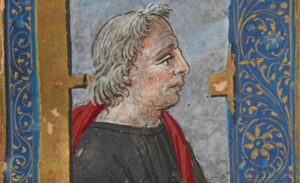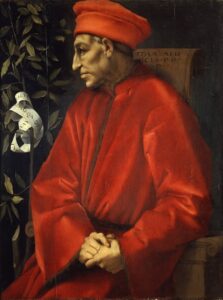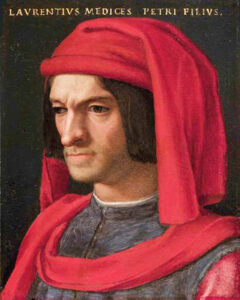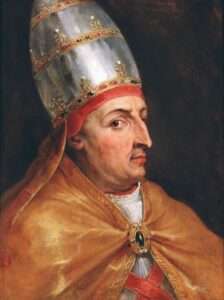The Italian Plutarch
by Mika Provata-Carlone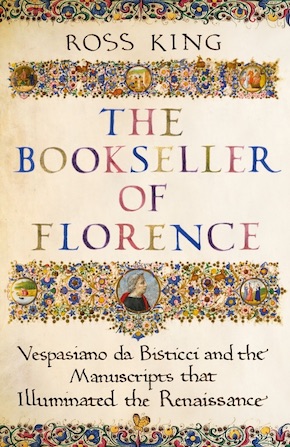
“King’s supreme ability is to imagine himself into the past… The scope of his knowledge is staggering.” John Carey, The Sunday Times
The Renaissance is so much more than the sum of its parts. Not only because of the tremendous change that it brought, as many have argued, to history, art, knowledge, human experience and science, to the perception and very substance of our world, but especially for the even more momentous continuity which, according to color che sanno, it affirmed body and soul, in each modicum and detail of its essence. That continuity found perhaps one of its most evocative and quintessential embodiments in the world of words and texts: the recorded journeys of thoughts, stories, histories and poems, or of meditations on the ineffable, what subsists beyond language, expression or even conception. The history of words and texts, their odysseys of germination and maturation, of exchange, interchange, diachronic and cross-cultural change or sublime immutability, together with their considerable corporeality, the tactility and substantiality of the materials and the material processes that render these words permanent, transmissible and recoverable, constitute for many the litmus test of our development as human societies.
The Renaissance is, if anything, the age of words made flesh, or of texts made into books, in greater numbers than ever before, and at a rate that had been unimaginable until then. The organic continuity and radical change between twig-scrawls on sand or wet mud, the scratching, carving out or chiselling of letters on recycled ostraca, reusable wax tablets or immutable stone slabs, the writing on skins, parchment and papyrus scrolls, vellum codices and paper volumes, is a story of intoxicating enchantment and mystery, as well as being suffused with a tragedy of historic proportions. Texts and the materials that conveyed them, preserved them, celebrated and monumentalised them have held a singular place through time. They have been repositories of experiences, traumas, promises and beauty, hopes and calumnies, visions and ominous prophecies of darkness. They have been treasured and held in temples or libraries, carried into exile as household gods and sacred relics in the aftermath of devastation, and they have been demonised and burned at the stake, dismembered and hacked as terrible yet helpless foes. Even when they no longer exist, because their material bodies have been destroyed by time, the natural elements or scavenging creatures, or the ravaging actions of humankind, their substance lingers, their memory and the echoes of what they were meant to say still haunts us. To find an old text is unfailingly an encounter, whether with a friend of the mind or an adversary of the soul. Those who came before us were keenly aware of the power of both preservation and erasure, and the story of both gestures is a sharp reflection of the state of our humanity at any given point.
This is a remarkable book, full of King’s trademark qualities: an extraordinary erudition, a powerful narrative clarity, and a talent for evoking events, people, their thoughts, tragedies, triumphs and lives.”
A foundation myth of the Renaissance is that it unearthed, as though a spectral yet mighty archaeologist, the voices and the words of the Greeks and the Romans, that it quite literally ‘rebirthed’ them and revived them, resurrected them from oblivion, from a world of the dead. That it brought forth an age of light and new, strong beginnings, out of “the age of despair” (as Michelet would call the Middle Ages), offering deliverance from what Petrarch would brand as the “Dark Ages”. As general assessments of an era go, this is, and is not quite right – as always, the devil is in the details, and Ross King’s latest book The Bookseller of Florence sets out to illuminate us in turn as to the details that truly matter, about the past, and about our present and future. This is a remarkable book, full of King’s trademark qualities: an extraordinary erudition, a mesmeric attention to a spectacularly rich hoard of minutiae, a powerful narrative clarity, and a talent for evoking events, people, their thoughts, tragedies, triumphs and lives. The Bookseller of Florence is suffused with a fascinating sense of magnification, and of close-up encounters which take us inside the intellectual and political heart of Florence, relishing the view of art and artisanship, of commerce and community, of the explosive history – local, European, universal – that emerges. It is a cross-cultural, diachronic and interdisciplinary perspective that is utterly enthralling, evincing with a certain grand magnificence (and certainly scholarly munificence) King’s magisterial engagement with the past, and his talent for tracing not just one, but a whole plexus of vital lives. King’s conceit is that he will tell us the story of a single man, Florence’s most industrious and eminent bookseller; his achievement is that he presents us with a history of writing and publication, of books, book-making, literacy, textuality and the social impact of documentary rather than oral learning and communication. Organically interwoven with this is a highly vivid and personal account of the complex socio-political environment of the time, complete with larger-than-life portraits of major and minor dramatis personae.
King picks out one life around which to revolve his Renaissance world, that of Vespasiano da Bisticci, a man who by virtue of exceptional good fortune and unquestionable industriousness and genius became, as King describes him, the veritable curator of much of the intellectual becoming and aesthetic apperception of his time. He trained in the art and many crafts of making books, and especially in that of sourcing texts, identifying cultural markets, and selling scientific knowledge, literature, philosophy or sacred writings in the shape of exquisite material objects. His books were utterly beautiful, rare finds for discerning readers or collectors. He sold them to all who could afford them, with a complete disregard as to their affinities, affiliations, partisanships or embattled states: he was bookseller and library-purveyor to Cosimo de’ Medici and Pope Nicholas V, but also to Federico da Montefeltro, managing to exist in a perfectly calibrated equilibrium between ferociously antagonistic sides. Vespasiano knew everyone, and he especially knew how to tell what was worth reading, even (or especially) when the text seemed to be only a rumour or a legend lost in the dunes of time. Towards the end of his life, he wrote a collection of vignettes on famous figures he had known or known about, which went from fame to oblivion, only to resurface in the 19th century, whereupon it may be said to have triggered a revolution in the European mind.
King’s book brings together riveting historical analysis and Vespasiano’s own taste for the piquant, the scurrilous and the anecdotal: his choice of cameos could be quite mordant and politically weighted at times.”
His Lives of Illustrious Men, for which he would be known as the “Italian Plutarch”, would kick-start a new and drastically different interest in the pre-modern times, leaving a deep mark on such key figures as Burckhardt or Edward Gibbon. King will use the Lives much in the way of a Hall of Mirrors, to reflect back and create a spectacular sense of depth. A butterfly that causes a storm by the mere flapping of its wings is perhaps the best way to describe the thrilling, tempestuously vibrant way he uses Vespasiano’s own story, which lies at the heart of his narrative. More than a retelling or a learned adaptation of Vespasiano’s 105 or so Vitae, King’s book brings together riveting historical analysis and Vespasiano’s own taste for the piquant, the scurrilous and the anecdotal: his choice of cameos could be quite mordant and politically weighted at times, and gives a particularly lively sense of social mores and human customs and predilections. In one instance, Vespasiano tells of a visit by a Sienese dignitary to Alfonso of Naples. The Sienese is dressed in sumptuous brocade, which Vespasiano makes a point of highlighting as a mark of decadent ostentation rather than grandeur, the fashion in Florence being for studied and artful subtlety in most things (excepting of course superbly illustrated and bound manuscripts). Alfonso shows up dressed somewhat shabbily, and has his courtiers crowd up around their guest, jostling him rather roughly. The result of all this carefully planned pushing and shoving is that the magnificent attire loses all its gilding, and the Sienese grandee is left looking rather the worse for wear. Florence was keen to assert its cultural and political supremacy at the time, from the prevalence of the dialetto fiorentino over all other regional Italian dialects, to the proclamation by Vassari that its art was the truly civilised one, eclipsing the barbarous duocento and trecento of Siena, Pisa and Padua. Vespasiano takes great relish in recounting the episode, and his readers would not have missed the slight and its symbolism.
Vespasiano “had the good fortune to start work with Guarducci [one of Florence’s foremost cartolaio] in the years when certain political events brought many distinguished visitors to the city [and] when ancient manuscripts, lost for centuries, were being rediscovered, and when popes and princes began to put together vast libraries.” The political events were the negotiations between Byzantium and the Catholic West towards a resolution of the Church Schism of 1054, in the hope of a rapprochement that might have opened the way for military support against the advancing Turks. In lieu of civil servants, the Byzantines would send to Italy as their ambassadors the most learned men of their time, who brought with them an impressive array and quantity of books and manuscripts with which to argue their case. The council of Ferrara/Florence failed, dramatically, theatrically and lamentably, yet the conversation over books, the glimpse that it offered into a different dialectics, and a parallel, yet separate worldview, mindset and cultural tradition, would succeed in intensifying for Western Europe a process of retrospection and introspection that did not, in fact, start with the Renaissance. It had been building in momentum since the missionary and scholarly work of Anglo-Saxon monks such as the Irish Columbanus and the Northumbrian Willibrord and Alcuin of York, it was reflected in Charlemagne’s vision for a new Roman empire and in the Carolingian revival, it had certainly been kindled by the influx of Byzantine émigrés following the occupation of Constantinople by the Crusaders in 1204, but also by the dynamic crossroads and polymorphic fusion that would emerge in the Latin Outremer states and in Southern Italy. Vespasianus was lucky enough to be at the right place at the right time: he lived, as King will claim, among “a charmed circle of wise and valorous men”, during times of radical upheaval, but also of extraordinary cultural promise and activity, in a Europe looking at the past in order to confront and shape the future.
A search for lodestars had been well afoot, with curious minds looking at the remnants of what had been, in their view, a more stable, beautiful, even humanising past.”
Especially for books, for readers and for writers, this was a time of great transition, which ushered in a radically new understanding of knowledge, or of narratives of what is and can be known. The illuminated manuscripts that would be Vespasiano’s speciality would soon have to compete against printed books, and the story of that battle (or of that yin-and-yang tension and osmosis) is at the heart of The Bookseller of Florence, an ingenious device through which to look at Italy and its bloody history, at Europe’s fractious engagement with itself and its ecumenising Romanitas, but also its emerging nationhoods and distinct interlaced identities. It provides a particularly sharp prism through which to assess Europeanism in and for itself, but also in its relational and antithetical palindromes towards new overmastering paradigms and dominant cultures at its borders.
Vespasiano lived in the wake of truly troubled times. Europe had just come up for air after the Hundred Years’ War and the Black Death, it was engulfed in civic violence, economic collapse and social unrest, the Pope had not too long ago moved from Rome to Avignon, and Rome itself was a place of savagery and ruin. A search for lodestars had been well afoot, with curious minds looking at the remnants of what had been, in their view, a more stable, beautiful, even humanising past. From science and architecture, art and political science, philosophy, literature, rhetoric or ethics, there was a vital interest in older structures of social or individual responses to crisis, disaster and adversity. A search would begin most notably with Giovanni da’ Dondi, Petrarch, and others, for ruins and words of old wisdom. As Cardinal Bessarion, whom Vespasiano would come to know well, would say, books, especially the old ones he had brought with him from Constantinople, “live, they converse and speak with us, they teach us, educate us, console us.” It was an attitude towards the past, its sustaining continuity, its promise for change that the Renaissance was eager to adopt.
King traces not only the process of recovery (by, as he writes rather suspensefully, “manuscript hunters”), but especially the progression towards ruination, as well as the tradition of transmission, reconstruction and preservation. The story of how the works of the Greeks and the Romans endured as part of a cultural corpus and a collective memory is an extraordinary tale of growth as well as of abandonment, of difficult cohabitations and of enlightened connections, modulations, inflections. Through an exhilarating survey of the technologies of writing and document production, King essentially tells the history of Europe’s dialectics with its own mind and soul, through not only the philosophical debates over a new theology or over constantly redefined societies and communities, but also through the very gesture of meticulous and determined conservation of both ideas and the material bodies that conveyed them.
We can only claim to know the echt Greeks and Romans in fragments and tatters, if, that is, we assume insular categories of pastness and existence, since in more ways than we are often willing to acknowledge, they constitute a vital part of the very fibre of all that we are. Most of their writings, their libraries, the records of their stories, histories and minds, the art of their words is lost, and that loss, King argues, was due not only to political systems of erasure and suppression, to hostile mentalities and ideologies or natural catastrophes, but to the very technology that at each moment in time was deemed able and sufficient to preserve them. Scrolls had to be copied onto books, papyrus had to be upgraded to parchment, as it became clear that old media and materials perished or failed the test of durability or even convenience. This would take place across what had been the Hellenistic and then the Roman world, in northern Europe (especially Ireland and Germany), as well as in France, Spain and Switzerland. In Italy, the scriptoria of Southern Italy, in the Greek-speaking Basilian monasteries, would also act as safeholds of texts, especially in Greek, the result of their exchanges and ties with Byzantium: “if Constantinople carried on, in name at least, the grandeur that was Rome, it likewise bore the legacy of Greece. This Greek heritage was obvious to anyone who visited Constantinople: the local population spoke Greek, and the city served as an enormous repository of ancient culture and learning… Virtually all of the Greek classics as we know them have come down to us thanks to Byzantine manuscripts copied in the 8th and 9th centuries.” Texts had not been quite lost, then, at least not everywhere. As Kurt Weitzmann has shown, “the West had changed fundamentally under the impact of the German invasions, while the East showed a remarkable continuity… In order to rebuild Western culture and revive its art [Western Europe] looked to the East for guidance. Byzantium no longer provided mere variants, but exempla” in its own living tradition.
According to Angelo Poliziano, librarian of Lorenzo de’ Medici and tutor to his children, ‘now the most stupid ideas can in a moment be transferred into a thousand volumes and spread abroad.’”
Copying was a complex process, as much a blessing as a curse in many ways. Plain accuracy was one pitfall, a tendency to anthologise rather than reproduce a text in full another. Material factors were also a consideration, and King gives a graphic picture of how many herds of cows would be required for a particular collection of parchment volumes or, once paper was introduced into the production process, how much discarded underwear (a novel fast-fashion item of the times), or more darkly how many “wardrobes” of the estimated 50 million dead of the Black Death would be recycled into fine writing surfaces. Vespasiano’s time of manuscript copying had already accelerated the pace and the demand; printing would revolutionise it, not only in terms of numbers of books created, but also in terms of aesthetics, readability and legibility, authorial trends and public choices. The visual aspects of writing styles (Greek or Latin uncials, gothic textura, Carolingian miniscule, insular Anglicana) also evolved into a distinct craft and technology of fonts, no longer aiming only for trademark appearance, beauty or speed of penmanship, but increasingly also for greater and more public readerly accessibility. Books in print however would not be hailed as a godsend by all. “A number of writers… feared this technology would harm knowledge by propagating errors” for one thing, but more crucially it echoed, according to Angelo Poliziano, librarian of Lorenzo de’ Medici and tutor to his children, our contemporary concerns with the mass media: “now the most stupid ideas can in a moment be transferred into a thousand volumes and spread abroad.” For others, printing carried the danger of educating the poor, of democratising knowledge and understanding. They posed a serious risk to morality (especially female), not to mention social stability, as proven by the relationship between secessionist Lutheranism and Calvinism and printing presses.
Yet books also emancipated women, as readers, but also as self-empowered, enfranchised professionals: at the Convent of San Jacopo di Ripoli they became dexterous compositors, even of raunchy texts such as Boccaccio’s Decameron. Printed books would become records of orality, as vernaculars claimed new prominence and legitimacy. At the same time that the ‘people’s language’ gained pre-eminence, Latin was redefined as well: no longer the expressive medium of political and cultural elites, it was given the status of an originary source, thus enabling a continuous sociohistorical narrative and new writing, new voices, in a nuanced, enriching linguistic polyphony – as had already been the case in Byzantium. Newly printed (or previously block-printed) illustrated books became readily available, household art-and-literacy objects, and King argues against the stereotype of an uneducated audience, who needed images because they could not access texts. On the contrary, “evidence suggests that the audience for these printed books and images was not so much illiterate peasants or humble craftsmen, but rather those from the middle and upper echelons of society – the same sort of people who bought manuscript books.” High and low, people could read, as evinced by the strong market for both manuscripts and printed books, adds King, or even the power of pamphleteering when it came to causes of all sorts.
Another stereotype King is keen to debunk is that of the Renaissance as the first step towards an anti-religious Enlightenment or as the first triumph of reason over spiritual faith. He shows with rather feisty determination that, in the words of Richard Trexler, “Renaissance man remained a Christian, even a pious one.” This, King seems to imply, is what made all the difference. One of the book’s most absorbing aspects is his analysis of the world of the Humanists as an engagement with Platonic and Aristotelian philosophy, not in order to supplant a Christianity deemed inadequate, oppressive or passé but, on the contrary, so as to clarify its inherent humanity, to illuminate its message and bring forth again, with the help of the Greek and Latin Classics, what might have been obfuscated.
King also places great emphasis on the presumed dichotomy between manuscript and printed book, echoing the current debates between electronic and traditional publication. The clash between worlds and technologies was real, and King shows this through the impact it would have on established economic structures, skill sets, professional careers. Vespasiano, to put it bluntly, was forced to close down shop, others had to retrain, reinvent and redefine themselves in order to survive, new centres of book production replaced older communities of scribes and scriptoria. In the case of the latter, book-making definitely came out of the enclosure of monasteries, and became now more assertively than ever before a public industry and domain. Yet there were those, and Vespasiano’s nudge in that direction was considerable, who still went against the grain of progress and change. In defiance of the times, Lorenzo il Magnifico would ‘reverse-engineer’ the pages of printed books, requiring them to be recopied and transformed into “beautifully illuminated leaves of parchment”. Vespasiano’s pride was that the Count of Urbino’s library was virtually uncontaminated by volumes in print.
The ability to produce books in print, in great numbers and at a relatively low cost, has often been hailed as the victory of a more equitable society, yet it has not often been noted that this also came at a considerably hefty price as regards the autonomy and agency of readers. With printing, public taste certainly matters, yet the close relationship between book maker and book buyer that had existed with manuscripts, and which subsisted on a unique dynamics of choice and influence, would now become exponentially more complex, if not extinct. A manuscript patron asked for a text to be copied, determined his readerly tastes and choices, even his aesthetic ones, to a substantial degree; with printing, public taste, both in terms of reading selection and aesthetic criteria, was as much steered by the book producers, as it was determined by sociopolitical structures and trends. It is the difference between bespoke and off-the-peg or the mass-produced. In offering abundance, printing also imposed critical limits on how much say readers had over the books they could or wanted to purchase and access.
Vespasiano da Bisticci was recalled back to public memory in 1926, when his Vitae were first translated into English by William George and Emily Waters as The Vespasiano Memoirs: Lives of Illustrious Men of the Fifteenth Century. The book was hailed at the time by The New York Times as “Medieval Babblings of ‘The Good Old Days’”. He was then brought to life and centre stage throughout a lifetime of passionate engagement by Albinia de la Mare, who is the acknowledged vates behind King’s text. A few unacknowledged fellow wayfarers are Stephen Greenblatt and his Swerve, which tells the story of Poggio Bracciolini (a key figure in King’s story), and his discovery of Lucretius’ De Rerum Naturae, as well as Iris Origo and her Merchant of Prato, and especially Andrew Pettegree and his own thrilling survey The Book in the Renaissance.
The Bookseller of Florence belongs to the good old-school tradition of books for keeps. It is pleasurably Rubenesque in form, exhilaratingly cornucopian in substance. A minor quibble but a vocal one is the use of endnotes instead of footnotes. There is such wealth and wonder in them that it is frustrating to constantly have to leapfrog back and forth in order not to miss the treasures one might come upon in them. In 1997, the illuminated 62 manuscript vellum leaves of Vespasiano’s vita of Allesandra di Bardo d’Bardi (the only woman in his illustrious humanity) was sold at Christie’s. The estimate was £70,000–£100,000, the price realised was £125,000. The description in the sales catalogue gives an extraordinarily tactile and visual sense of the aura of magnificence of Vespasiano’s books, but also of their deeply personal feel and affective impact: Alessandra’s vita is, we are told, “a remarkable and evocative book, essentially unaltered since it left Vespasiano’s hands.” Some of the books he produced have survived to remind us of our own close relationship with texts as physical objects and deeply vital presences – as personal connections and relations. Yet his own library of books, which was said to be equally “remarkable and evocative”, has been lost without a trace. Rumours circulate that his books may be walled up or buried under floorboards at his country house, Casa Il Monte, in Antella, which still survives, a tempting thought, if any there was, for contemporary manuscript hunters.
Vespasiano is a rare combination of the aesthetic and cultural idealist, and the shrewd business- and market-savvy entrepreneur. As Humanism’s project progressed, the latter aspect would by far outpace and outweigh the former, leading to our own gargantuan industry of word and type. King’s book ends with an ode and a lament for the intellectual tradition of Europe – its testimony to a continuous effort to understand, for all the hiccups and the false paths, the human condition, to find ways of enhancing beauty, meaning and the goodness of existence. The heritage of texts, of printed or manuscript books, of cultural objects and places, tells of the power and vulnerability of the European spirit. King’s plea is that we should cherish and preserve, renew and add afresh, so that these storylines and their books many not be lost, destroyed or erased. It is a plea for continuity, for reflection, for awe and admiration before both creativity and wisdom. We should ignore it at our peril.
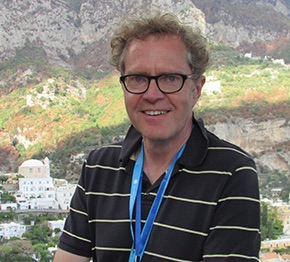 Ross King is a renowned expert in the Italian Renaissance. His bestselling and acclaimed books include Brunelleschi’s Dome, Michelangelo and the Pope’s Ceiling, Leonardo and the Last Supper and Mad Enchantment: Claude Monet and the Painting of the Water Lilies. His love of Renaissance Florence, which he has been studying, writing and lecturing about for over twenty years, made Vespasiano’s long-forgotten story – never written about before – an irresistible next subject. The Bookseller of Florence is published in hardback and eBook by Chatto & Windus/Vintage Digital.
Ross King is a renowned expert in the Italian Renaissance. His bestselling and acclaimed books include Brunelleschi’s Dome, Michelangelo and the Pope’s Ceiling, Leonardo and the Last Supper and Mad Enchantment: Claude Monet and the Painting of the Water Lilies. His love of Renaissance Florence, which he has been studying, writing and lecturing about for over twenty years, made Vespasiano’s long-forgotten story – never written about before – an irresistible next subject. The Bookseller of Florence is published in hardback and eBook by Chatto & Windus/Vintage Digital.
Read more
rosskingbooks.com
@ChattoBooks
Mika Provata-Carlone is an independent scholar, translator, editor and illustrator, and a contributing editor to Bookanista. She has a doctorate from Princeton University and lives and works in London.
bookanista.com/author/mika/

